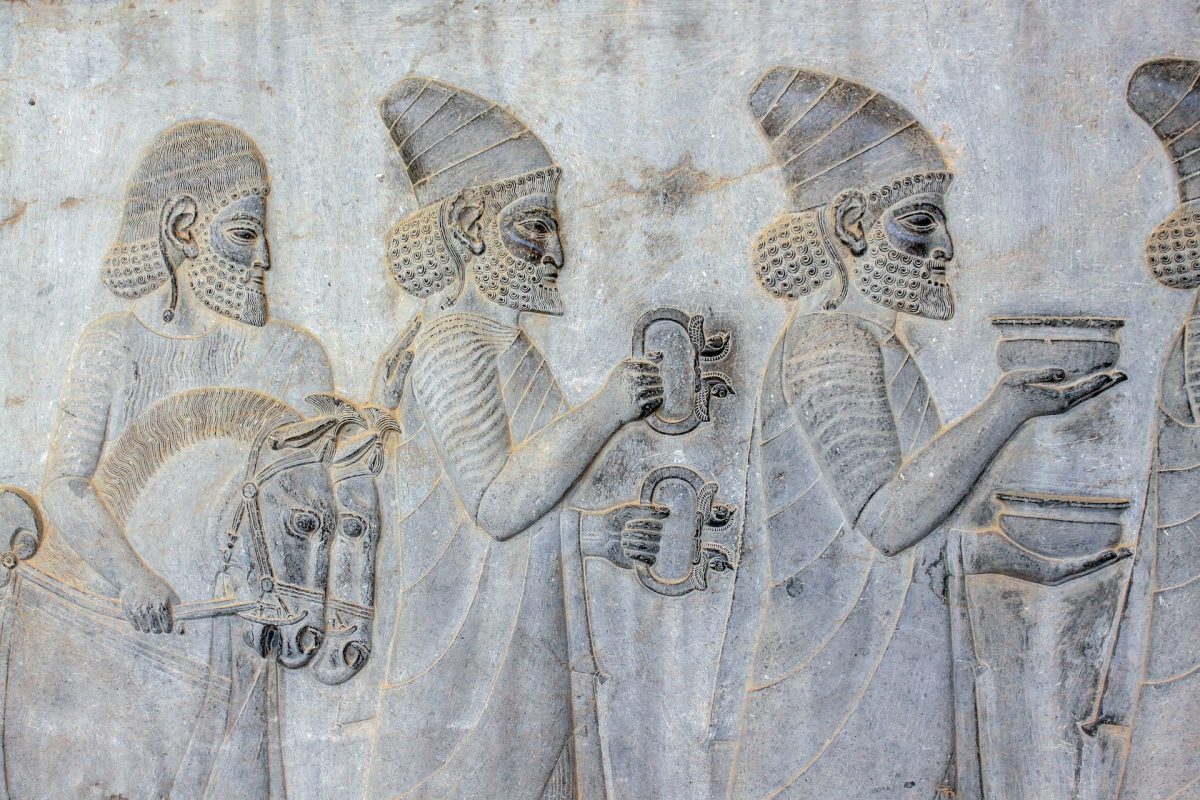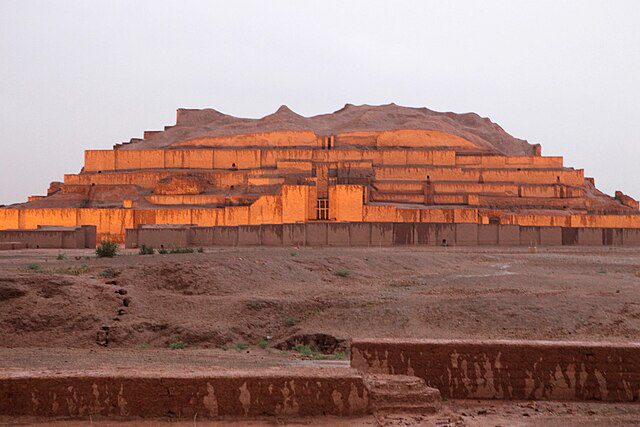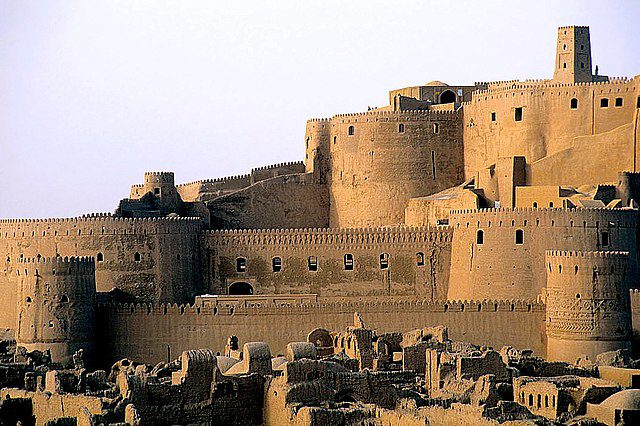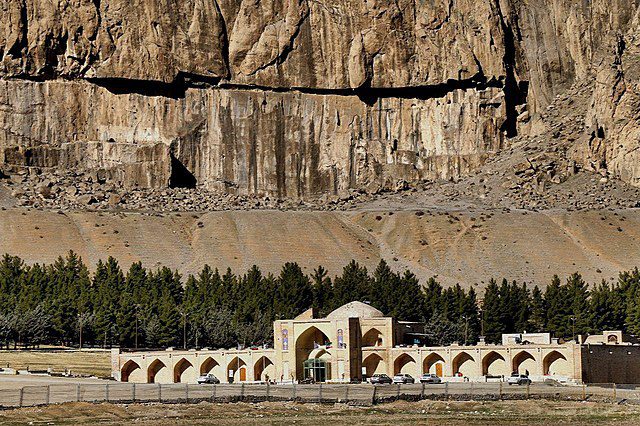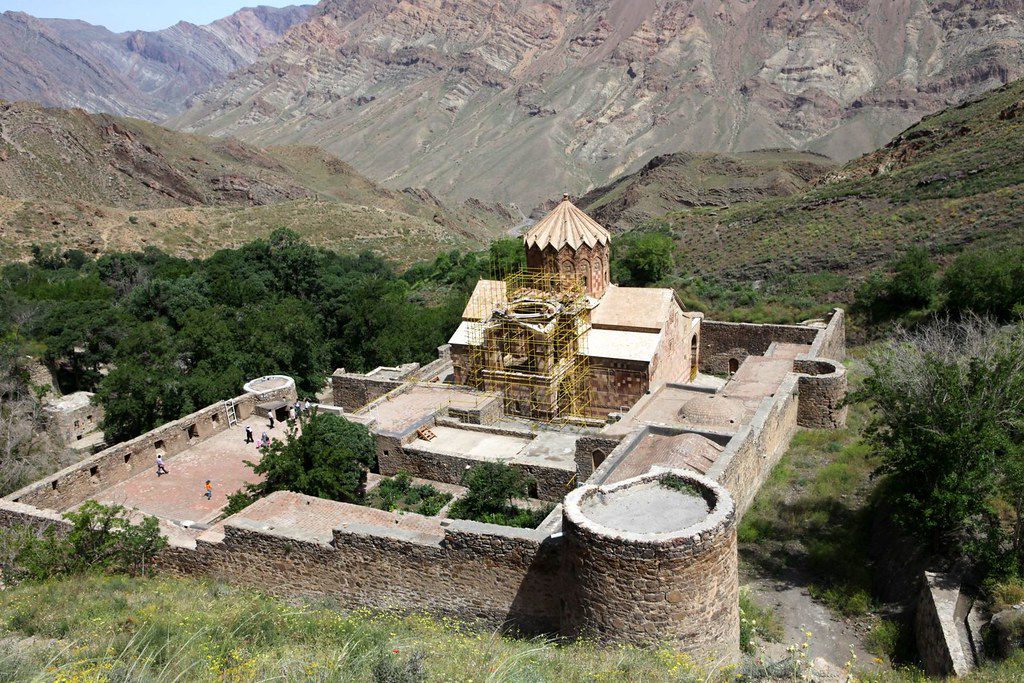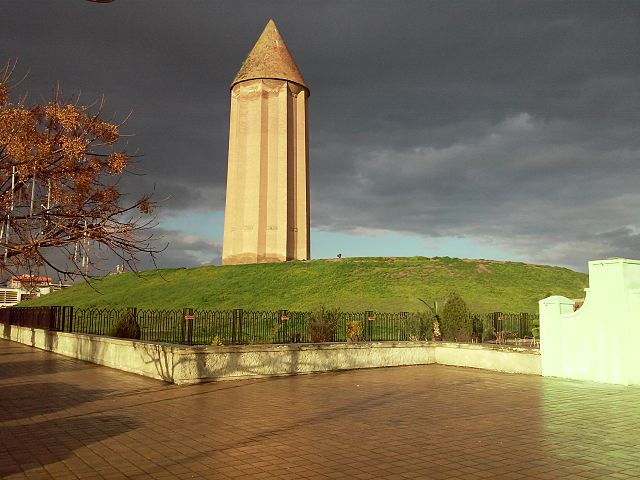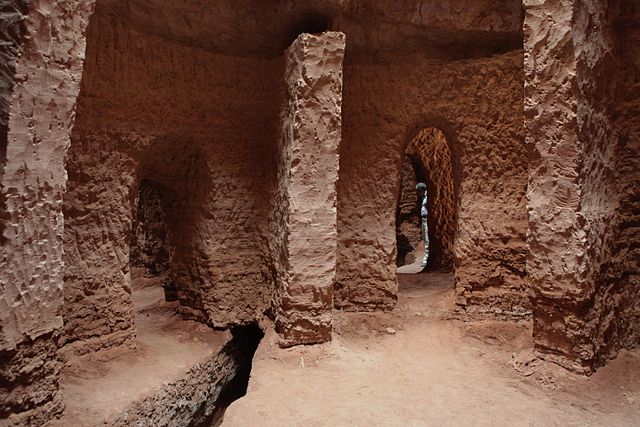Table of Contents
Iran’s UNESCO World Heritage Sites is among the top 10 countries with the most Cultural Heritage Sites in the UNESCO’s World Heritage List in the year 2024. Iran’s UNESCO sites include cultural (25 sites) and natural (2 sites).
It’s interesting to know that by 2023, more than 1,157 sites have been listed on the UNESCO World Heritage and millions of tourists visit these fascinating sites and monuments annually. As you know, World’s Cultural Heritages belong to the whole world not only to one country. It’s also worth mentioning that the places listed on this list belong to all humans on earth, regardless of race, nationality, or religion, and it is the duty of states and governments to make every effort to protect and preserve these monuments.
So, it is necessary to know the world’s cultural heritage. Here are 27sites of Iran’s UNESCO Heritage sites in 2024:
Naghsh-e Jahan Square (Meidan Emam, Isfahan)
UNESCO introduces it as “one of the largest city squares in the world and an outstanding example of Iranian and Islamic architecture.” Naqshe Jahan square which means the image of the world is located in Isfahan.
Naqsh-e Jahan, also known as the “image of the world,” has been recently hailed by UNESCO as one of the largest city squares in existence, showcasing the extraordinary beauty of Iranian and Islamic architecture. Nestled within the enchanting city of Esfahan, often referred to as “Nesf-e Jahan” or half of the world, this magnificent square holds immense cultural significance. As we delve into the allure of Naqsh-e Jahan, we uncover a world where history and architectural wonders converge.
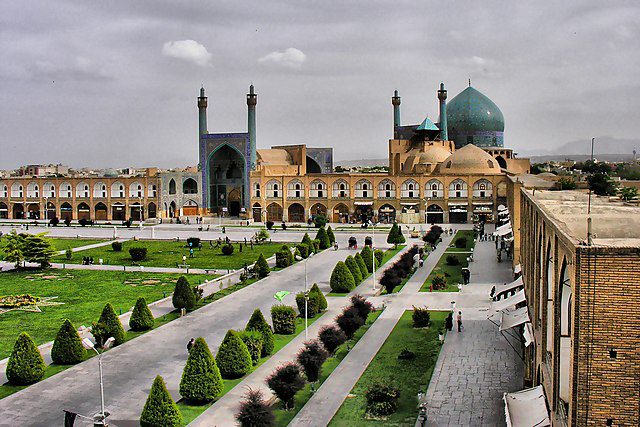
The Bazaar and Surroundings
As you set foot in Naqshe Jahan, you are immediately immersed in a sensory feast. The square is encircled by a vibrant bazaar, bustling with activity and the aroma of spices and delicacies. The sheer magnitude of this marketplace showcases the historical importance of commerce and trade in Esfahan throughout the centuries.
Qeysarieh Portico
On the northern end of the square stands the remarkable Qeysarieh Portico, a gate that harkens back to the 15th century. Its ancient architecture bears witness to the countless travelers and merchants who have passed through its grand arches. Walking beneath the intricately designed portals, one can almost feel the echoes of the past reverberating through the air.
Shah Mosque (Imam Mosque)
To the south of Naqsh-e Jahan lies the awe-inspiring Shah Mosque, also known as the Imam Mosque. This architectural marvel, constructed in the early 17th century, commands attention with its magnificent domes and minarets. Its intricate tile work, adorned with mesmerizing geometric patterns and calligraphy, reflects the profound artistic talent of its creators. The Shah Mosque stands as a testament to the unwavering devotion and creativity of the craftsmen who built it and is a great example of Islamic architecture among all Iran UNESCO Sites.
Ali Qapu Palace
On the western side of the square, the magnificent Ali Qapu Palace awaits discovery. This opulent structure, dating back to the early 17th century, once served as the residence of the ruling Safavid dynasty. As you ascend the palace’s grand staircase, you are greeted by intricately painted walls and ceilings, depicting mythological scenes and vibrant floral motifs. Standing atop the palace’s terrace, you are rewarded with a breathtaking view of Naqsh-e Jahan, offering a glimpse into the grandeur of the bygone era.
Sheikh Lotfollah Mosque
Completing the ensemble on the eastern side of the square is the exquisite Sheikh Lotfollah Mosque. Renowned for its delicate beauty, this mosque was built during the same period as the Shah Mosque. Its understated entrance belies the treasures that lie within. Step inside, and you will find yourself surrounded by stunning tile work, featuring intricate arabesques and floral designs. As sunlight filters through the stained glass windows, casting a kaleidoscope of colors, the atmosphere within the mosque becomes truly enchanting.
Persepolis
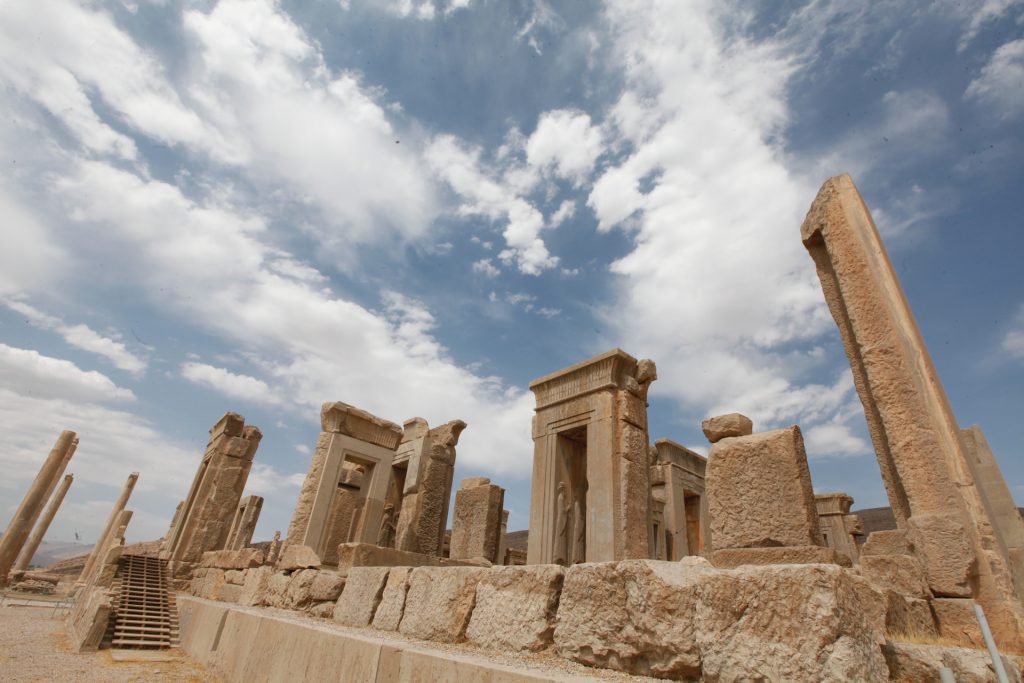
When the Persian emperor, Cyrus the Great, walked into Babylonia in the first millennium B.C., he commanded to let people to pray for their gods and even released the Jewish prisoners.
In the annals of history, few places can rival the grandeur and cultural significance of Persepolis. This awe-inspiring city, located in present-day Iran, was once the capital of the liberal and enlightened Achaemenid emperors. As we journey back in time to the first millennium B.C., we discover a remarkable civilization led by visionary leaders who championed religious freedom and cultural diversity and were listed in the list of Iran World Heritage Sites.
Cyrus the Great’s Proclamation
Let us begin our exploration with Cyrus the Great, the Persian emperor who walked the streets of Babylonia. In an extraordinary display of open-mindedness, he decreed that people should be free to worship their gods and even ordered the release of Jewish prisoners. This act of benevolence showcased the inclusive and tolerant nature of the Achaemenid Empire.
The Rise of Persepolis
Persepolis, the crowning jewel of the Achaemenid Empire, was brought to life under the rule of three remarkable emperors: Darius I, Xerxes I, and Artaxerxes I. These visionary leaders undertook the ambitious task of constructing a magnificent palatial complex on a vast terrace, blending the natural landscape with artificial elements. The result was nothing short of extraordinary.
Exploring the Splendors of Persepolis Complex
As we delve into the wonders of the Persepolis Complex, we are greeted by majestic approaches that lead us to monumental stairways, setting the stage for an awe-inspiring experience. Each step taken is a testament to the meticulous craftsmanship and architectural prowess of ancient Persia.
The Apadana
The Apadana, the grandest of all throne rooms, stands as a testament to the power and opulence of the Achaemenid emperors. Here, amidst magnificent columns and intricately carved reliefs, the rulers would hold court and receive dignitaries from far and wide. The Apadana exudes an aura of majesty, transporting visitors back to a time when empires were at their zenith.
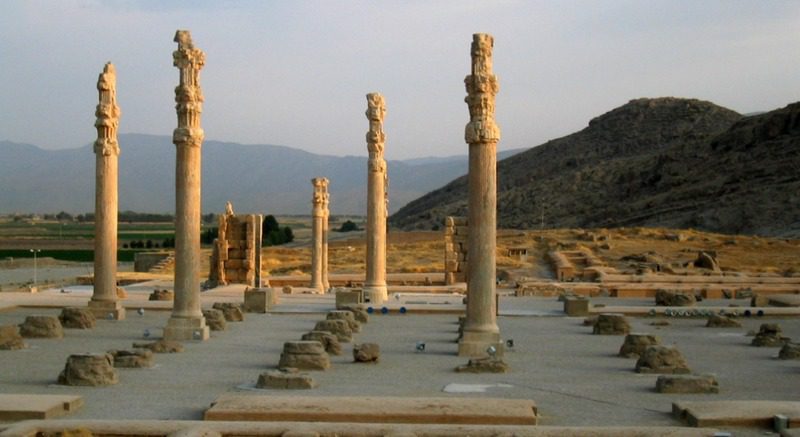
Reception Rooms
Beyond the grandeur of the Apadana, we discover the reception rooms, where the emperors welcomed ambassadors and delegates from across the empire. These spaces served as a melting pot of cultural exchange, where ideas and traditions intertwined, fostering a rich tapestry of diversity and mutual understanding.
Annex Buildings
Among the sprawling complex of Persepolis, annex buildings dotted the landscape, each with its unique purpose and significance. From administrative offices to storerooms, these structures provided the necessary infrastructure to support the empire’s vast operations. Each building tells a story of the intricate workings of a mighty civilization.
A Living Testament to Ancient Civilization
Persepolis stands as a testament to the incredible achievements of the Achaemenid Empire, showcasing a level of architectural sophistication and artistic brilliance that remains unparalleled. Its inclusion among the world’s greatest archaeological sites is a testament to its enduring legacy and the profound impact it has had on our understanding of ancient civilizations.
Tchoqa Zanbil
In the heart of Khuzestan, Iran, stands a remarkable testament to the ancient civilizations of Mesopotamia and the local Elamites. Choqa Zanbil, home to the best-preserved ziggurat of its kind, and a miracle among Iran’s UNESCO Sites stands proudly as a symbol of architectural brilliance and religious devotion. Join us as we uncover the mysteries of this monumental structure and explore the captivating world of ziggurats.
The Magnificence of the Ziggurat
Rising proudly from the earth, the ziggurat at Tchogha Zanbil holds the distinction of being the largest and most well-preserved monument of its kind outside of Mesopotamia. Ziggurats, those awe-inspiring stepped pyramidal temples, adorned the landscapes of ancient Mesopotamia and Khuzestan during the second and first millennia B.C. These architectural marvels were not only religious centers but also symbols of power and grandeur.
An Ancient Wonder Brought to Life
Imagine standing before the mighty ziggurat of Choqa Zanbil, its colossal presence leaving you in awe. Originally measuring an impressive 105.2 meters on each side and reaching a height of approximately 53 meters, this monumental structure stood tall, composed of five levels. At its pinnacle, a magnificent temple graced the skies, serving as a place of worship and reverence.
The Artistry of Mud Brick
Mud brick, a humble material, formed the foundation of the entire ensemble at Choqa Zanbil. The skillful hands of ancient craftsmen molded and shaped the bricks, creating a lasting legacy that defies the passage of time. These bricks were meticulously arranged, their reddish-brown hue harmonizing with the natural surroundings, and serving as a testament to the ingenuity and resourcefulness of the builders.
A Tribute to Elamite Kings and Gods
The ziggurat of Choqa Zanbil holds a profound significance in the ancient Elamite civilization. It was built by the Elamite kings, a testament to their power and authority. The temple atop the ziggurat was dedicated to the veneration of the Elamite gods Inshushinak and Napirisha, embodying the spiritual beliefs and practices of the Elamite people.
Preserving the Legacy of Iran’s UNESCO World Heritage Sites
The preservation of Choqa Zanbil has been a labor of love, ensuring that this architectural gem stands tall for generations to come. Conservation efforts have been undertaken to protect the ziggurat from the ravages of time and the elements. As we marvel at its magnificence today, we owe a debt of gratitude to the dedicated archaeologists and preservationists who have safeguarded this cultural treasure.
Unlocking the Secrets of the Past
Exploring Choqa Zanbil allows us to unlock the secrets of an ancient civilization, offering a glimpse into the beliefs, traditions, and architectural prowess of the Elamite people. As we wander through its corridors and ascend its steps, we are transported back in time, where gods were revered, and kings ruled with grandeur and majesty.
A Testament to Human Ingenuity
The ziggurat at Tchogha Zanbil stands as a testament to the ingenuity and creativity of humanity. Its imposing presence, intricate design, and enduring resilience captivate our imagination, reminding us of the extraordinary achievements of our ancestors. It serves as a reminder that even in the distant past, humans were capable of remarkable feats of engineering and spiritual devotion.
Takht-e Soleyman (Throne of Solomon)
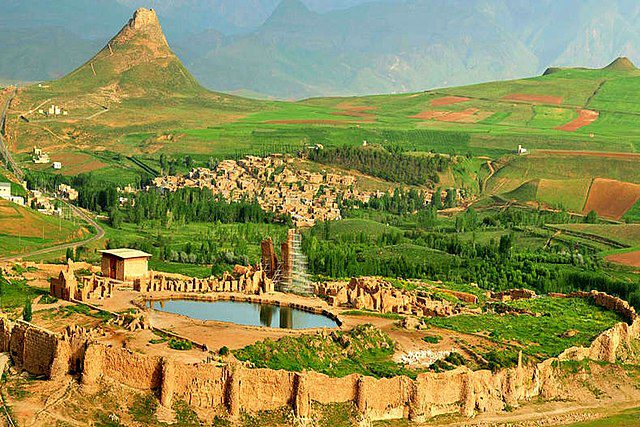
Takht-e Soleyman holds a rich historical tapestry, with traces of civilizations past etched into its very foundation. At the heart of this complex lies a Zoroastrian fire temple, serving as a testament to the enduring legacy of this ancient faith. Zoroastrianism, one of the world’s oldest religions, revered fire as a symbol of purity and divinity. The temple stands as a testament to the deep-rooted spiritual beliefs of its worshippers.
Adding to the allure of Takht-e Soleyman is the temple dedicated to Anahita, the revered divinity of waters. As visitors explore the sprawling complex, they are greeted by the remnants of this sacred sanctuary. It serves as a reminder of the profound connection between humans and the life-giving forces of water, revered by ancient cultures across the globe.
But Takht-e Soleyman’s story is not one without trials and tribulations. As the Sasanian era came to a close, this extraordinary site fell victim to destruction. Yet, like a phoenix rising from the ashes, Takht-e Soleyman experienced a revival in the 13th century. Through meticulous reconstruction efforts, parts of the complex were brought back to life, allowing future generations to bear witness to its splendor.
As one embarks on a journey to Takht-e Soleyman, a world of marvels awaits. The complex sits atop a mountain, its panoramic vistas offering a glimpse into the awe-inspiring beauty of the surrounding landscape. Nature’s grandeur merges seamlessly with the architectural brilliance, creating an enchanting tableau that leaves visitors spellbound.
The Serene Lake
At the heart of Takht-e Soleyman lies a natural lake, a tranquil oasis nestled amidst the rugged mountainous terrain. The shimmering waters mirror the surrounding cliffs and lush greenery, creating a spectacle that evokes a sense of serenity and peace. Visitors often find solace in this picturesque setting, where they can immerse themselves in the tranquility of the surroundings.
The Zoroastrian Fire Temple
The Zoroastrian fire temple stands as the centerpiece of Takht-e Soleyman. Its imposing structure, adorned with intricate carvings and architectural marvels, serves as a testament to the ancient Zoroastrian faith. As one steps into the temple’s hallowed halls, a palpable sense of reverence fills the air. The flickering flames of the sacred fire dance in harmony with the chants and prayers, transporting visitors to a realm where the spiritual and the earthly converge.
Anahita Temple
In the sprawling expanse of Takht-e Soleyman, the ruins of the Anahita Temple pay homage to the divinity of waters. Dedicated to Anahita, this temple once held great significance in the rituals and ceremonies of ancient times. The intricate details of its architecture and the sacred atmosphere that lingers within its walls offer a glimpse into the spiritual devotion of those who once worshipped here.
Bam and its Cultural Landscape
Bam, an enchanting fortified medieval town nestled in Iran, holds within its ancient walls a captivating tale of history and cultural significance. From its strategic location along the illustrious Silk Road to its remarkable architectural technique employing mud layers known as Chineh, Arg-e Bam and its cultural landscape stand as prime examples of the region’s rich heritage in the list of Iran World Heritage Sites. Let us embark on a journey through time and explore the splendor of this extraordinary site, unraveling its origins and legacy.
Origins of Arg-e Bam
Dating back to the 4th to 6th centuries B.C., Arg-e Bam’s roots run deep, offering a glimpse into the ancient civilizations that once thrived in the region. This remarkable construction has evolved over the centuries, ultimately reaching its pinnacle during the 7th to 11th centuries. As the hub where the Silk Road intersected, Bam witnessed an era of bustling trade and cultural exchange, becoming an important crossroad connecting the East to the West and the North to the Southern waters.
Architectural Marvel
At the heart of Arg-e Bam’s allure lies its architectural grandeur. The town’s fortified structures, constructed using vernacular techniques and mud layers known as Chineh, showcase the ingenuity and skill of its creators. The intricate craftsmanship and attention to detail evident in every nook and cranny bear witness to the immense dedication and talent of the builders.
The Magnificent Citadel
Standing tall within Arg-e Bam is the awe-inspiring Citadel, the crowning jewel of this medieval town. Its sheer size and commanding presence make it an architectural wonder to behold. The Citadel served as the central stronghold, offering protection and security to the inhabitants within its sturdy walls. As we wander through its labyrinthine corridors and expansive courtyards, echoes of the past whisper tales of prosperity, resilience, and the triumph of human ingenuity.
The Silk Road Connection
One cannot explore the history of Arg-e Bam without acknowledging its vital role as a vital node along the illustrious Silk Road. This ancient trade route facilitated the exchange of goods, ideas, and knowledge between diverse civilizations. As merchants and travelers passed through Bam, they left indelible marks on its cultural fabric, enriching the town with a vibrant tapestry of customs, languages, and traditions.
Pasargadae
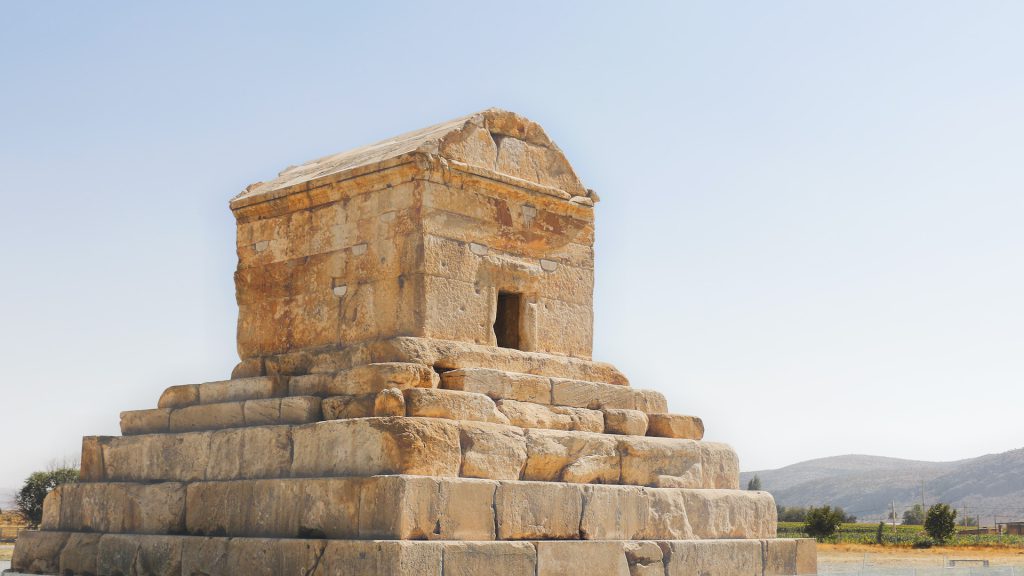
Nestled amidst the ancient lands of Persia, Pasargadae holds the rich legacy of being the ancestral homeland of the Persian people. It was here that Cyrus the Great, a visionary ruler, transformed Pasargadae into the capital of the Persian Empire.
The Achaemenid emperors, who followed in Cyrus’s footsteps, were known for their remarkable respect for diverse cultures, beliefs, and human rights. Within the remains of Pasargadae, we discover a treasure trove of evidence showcasing this unprecedented openness and the enduring influence of this mighty civilization.
From Homeland to Capital
Pasargadae’s history traces back to a time before Cyrus the Great’s reign, when it served as the ancestral homeland of the Persian people. However, under Cyrus’s visionary leadership, it blossomed into a magnificent capital, becoming the heart of the Persian Empire. This transformation marked a pivotal moment in history, setting the stage for the subsequent greatness of the Achaemenid dynasty.
Achaemenid Legacy
One of the defining features of the Achaemenid emperors was their unwavering respect for the cultures, beliefs, and human rights of the people within their vast empire. This enlightened approach distinguished the Persian Empire from its predecessors and contemporaries, leaving an indelible mark on the annals of history. Pasargadae stands as a testament to this cultural openness, preserving the echoes of a bygone era.
The Mausoleum of Cyrus the Great
Within the ancient grounds of Pasargadae, the Mausoleum of Cyrus the Great stands as a striking testament to the grandeur of the Achaemenid era. This stone-built structure, rising in six majestic steps to a total height of 11 meters, houses a sacred chamber at its pinnacle—the final resting place of Cyrus the Great himself. As we gaze upon this architectural marvel, we can’t help but feel a profound reverence for the historical significance it holds.
Soltaniyeh Dome
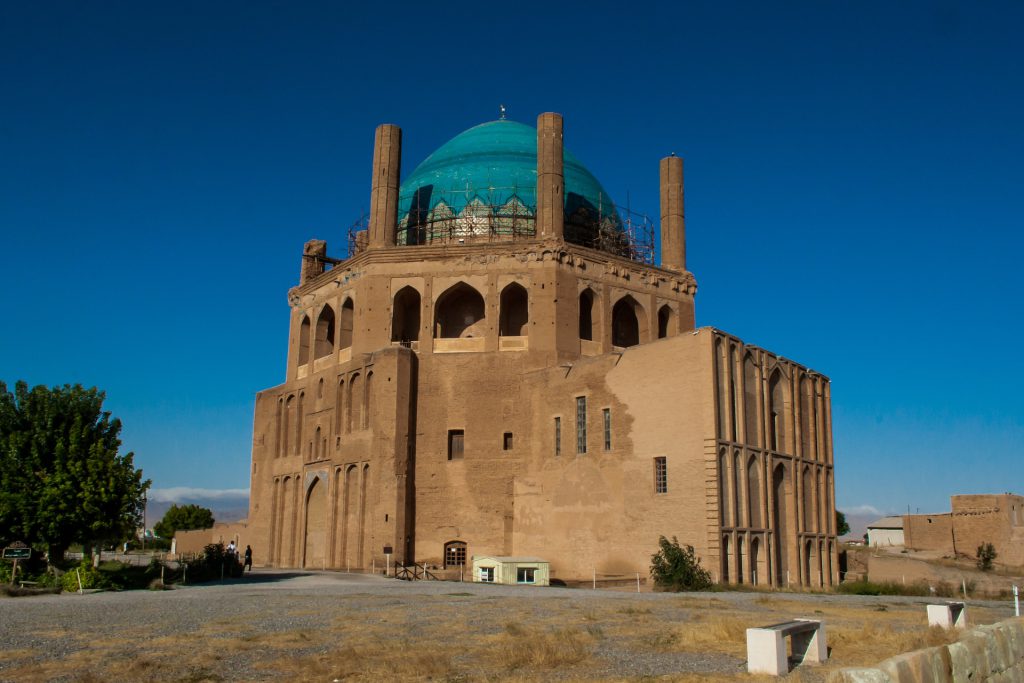
This architectural marvel, constructed in the early 14th century, serves as the final resting place of Soltan Uljaitu, the Ilkhanid king. Standing tall and proud, Soltaniyeh Dome boasts the honor of housing the third largest dome in the world, a testament to the ingenuity and grandeur of Persian-Islamic architecture. Let us delve into another of Iran’s UNESCO World Heritage Sites included in our archeological Iran tour. keep reading to learn more about the enchanting history and captivating features of this extraordinary structure.
Ranking Among the World’s Finest
Soltaniyeh’s claim to fame lies in its remarkable dome, which proudly secures the third spot among the largest domes on the planet. Surpassed only by the domes of Santa Maria del Fiore in Florence and the iconic Hagia Sophia in Istanbul, Soltaniyeh‘s dome stands as a testament to human engineering and architectural brilliance. Its imposing presence and exquisite craftsmanship leave visitors in awe, marveling at the ingenuity of the craftsmen who brought this monumental dome to life.
The Oldest Double-Shelled Dome
Within the annals of Persian-Islamic architecture, Soltaniyeh holds a unique distinction—it is home to the oldest double-shelled dome in existence. This ingenious architectural technique, known for its strength and stability, showcases the mastery of Persian artisans and their ability to create enduring structures. The double-shelled design of Soltaniyeh’s dome stands as a testament to the skill and innovation that defined the era, leaving a lasting legacy for future generations to admire.
The Interior Splendor
As we step inside Soltaniyeh, we are greeted by a world of architectural wonder and mystery. The interior design of this grand mausoleum is nothing short of extraordinary. Intricate corridors and stairways link a series of halls and rooms, inviting visitors to explore and unravel the secrets held within these hallowed walls. Each turn reveals a new vista, a captivating blend of artistic details and historical significance, further enhancing the allure and enigma of this remarkable structure.
Bisotun
Nestled along the main route to Mesopotamia, Bisotun emerges as a mountain steeped in the echoes of ancient civilizations. Its very name, meaning “the place of gods,” hints at the mystical allure that awaits explorers who venture into its embrace. From Paleolithic caves to Achaemenid bas-reliefs, Parthian sculptures, and Islamic caravansaries, Bisotun reveals a treasure trove of historical remnants spanning a vast timeline. Let us embark on a journey through Iran UNESCO Sites and uncover the extraordinary marvels that lie within the depths of this storied mountain.
Paleolithic Caves
As we delve into the depths of Bisotun, we encounter a captivating link to our distant past. Two Paleolithic caves, dating back thousands of years, stand as silent witnesses to the lives and experiences of our ancient ancestors. These caves offer a glimpse into the daily routines, art, and rituals of prehistoric communities, painting a vivid picture of a time long gone but not forgotten.
Achaemenid Legacy
The Achaemenid Empire, renowned for its grandeur and influence, left an indelible mark on Bisotun’s historical landscape. Among its most prominent remnants is a remarkable bas-relief depicting Darius the Great, the mighty ruler of Persia, and his nine vanquished enemies. This masterpiece of ancient art narrates the triumphs of the empire and serves as a testament to the power and glory of a bygone era just like other Iran’s UNESCO World Heritage Sites.
Parthian Treasures and Hellenistic Splendor
Bisotun’s allure transcends the Achaemenid period, encompassing treasures from various civilizations. Three Parthian bas-reliefs, intricately carved with meticulous detail, offer insights into the artistry and cultural heritage of the Parthian Empire. Additionally, a Hellenistic statue of Hercules stands as a symbol of the cross-cultural influences that shaped the region, a testament to the fusion of Persian and Hellenistic traditions.
Islamic Caravansaries
Bisotun’s strategic location as a crucial thoroughfare connecting Iran to Mesopotamia made it a hub of trade and cultural exchange throughout the centuries. Along its ancient route, two Islamic caravansaries emerged, serving as vital rest stops for weary travelers and merchants. These caravansaries, with their architectural splendor and historical significance, tell tales of bustling markets, lively conversations, and the convergence of diverse cultures.
Bisotun’s Vast Treasury
The wonders of Bisotun extend far beyond the objects mentioned thus far. Within its vast treasury lie numerous archaeological remains, waiting to be discovered and unraveled by the curious explorer. Each artifact, each inscription, carries with it a piece of history, offering a glimpse into the lives, beliefs, and triumphs of those who came before us. From forgotten civilizations to illustrious empires, Bisotun stands as a living testament to the resilience and enduring spirit of humanity.
Armenian Monastic Ensembles of Iran
Exactly on the borders of Armenia and Iran, two churches and one chapel have shaped an exceptional cultural landscape between the mountains. St Thaddeus Church is the oldest one which dates back to the 7th century. The other church is called St Stepanos.
The construction date of Armenian Monastic Ensembles of Iran is still a matter of discussion but archaeologists who study UNESCO sites in Iran believe it was first built in the 7th century and was re-constructed during the Safavid period. Plus to two churches, there is a chapel called Dzordzor founded in the early 14th century.
Today, it is located on top of a mountain in front of a lake but it was removed from its original place, which is 600m away, in the late ’80s due to dam construction. Armenian Monastic Ensembles show the interchange between Persian, Armenian, and Byzantium cultures and architecture.
Shushtar Historical Hydraulic System
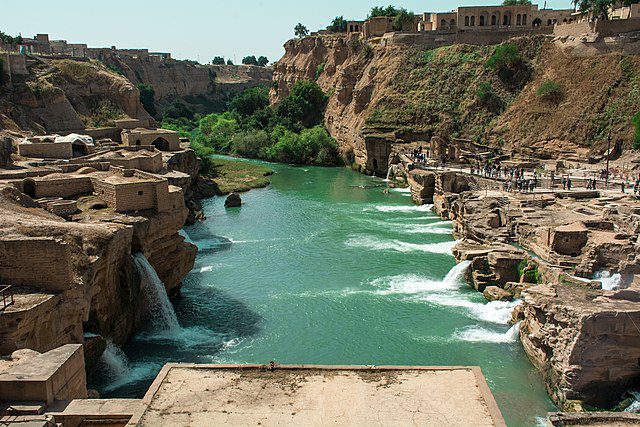
Shushtar Historical Hydraulic System encompasses a harmonious blend of water management structures, including bridges, dams, canals, and cascades. It stands as a testament to the ingenuity of ancient civilizations, fusing a diverse range of techniques to create a monumental and comprehensive hydraulic ensemble. With influences spanning from the Elamites and Mesopotamians to the Nabateans and Romans, the Shushtar system showcases the remarkable expertise and collaboration of these civilizations throughout the ages.
Water Management
As we explore the intricate network of the Shushtar Historical Hydraulic System, we are greeted by a tapestry of interconnected structures designed to harness and control the power of water. Bridges gracefully arch over canals, dams stand firm in their commitment to regulate water flow, and cascades create a mesmerizing display of water in motion. This comprehensive ensemble paints a vivid picture of the ancient societies’ mastery over water management and their commitment to harnessing this precious resource for the benefit of their communities.
Ancestral Expertise
The origins of the Shushtar system can be traced back to the rich heritage of the Elamites and Mesopotamians, renowned for their knowledge of canal irrigation. Drawing from this ancient expertise, the system evolved and expanded, incorporating innovative techniques from the Nabateans, who added their unique contributions to its construction. The collective wisdom of these civilizations laid the foundation for the remarkable hydraulic marvel that we witness today.
The Roman Influence
The influence of the Roman Empire celebrated for its engineering prowess, is unmistakable in the construction of the Shushtar system. Roman technicians, with their advanced knowledge and innovative techniques, left an indelible mark on the development and refinement of the hydraulic ensemble. Their contributions further enhanced the functionality and grandeur of the system, showcasing the impressive cross-cultural exchange that shaped this architectural marvel.
Sheikh Safi Al-din Khānegāh and Shrine Ensemble in Ardabil
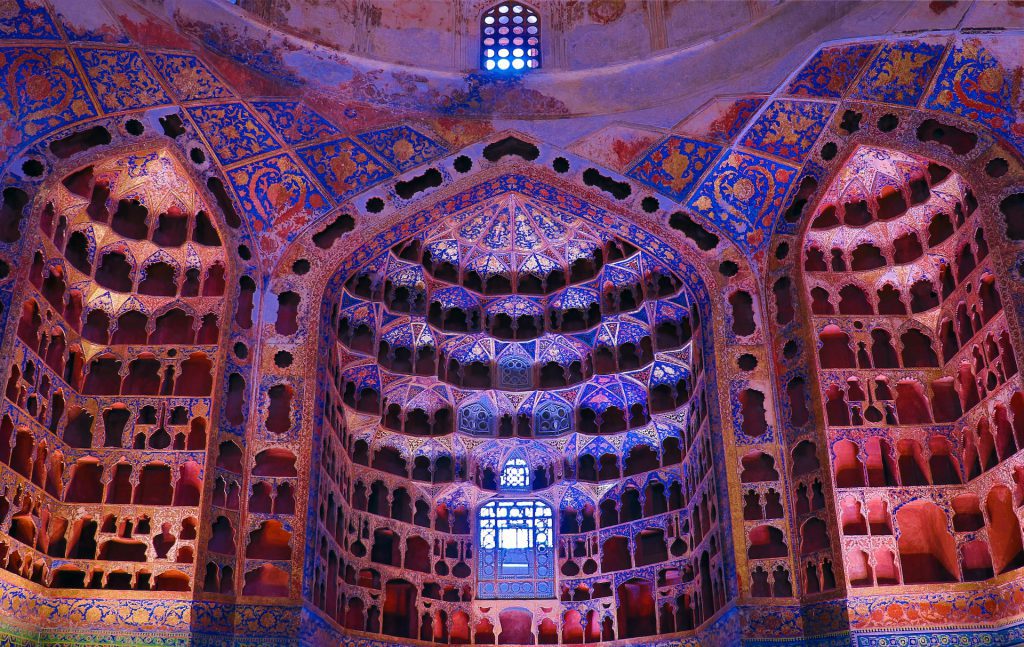
Welcome to the enchanting world of the Sheikh Safi al-Din Ensemble, a stunning architectural masterpiece that transports us to the heart of 16th-century Iran. This exceptional religious complex not only served as a spiritual sanctuary but also encompassed a range of social, charitable, cultural, and educational functions. It stands as a shining example of Safavid architecture, setting the stage for future khānegāh and Sufi shrines. Join us as we explore this extraordinary ensemble, which also doubles as a captivating museum of Islamic art.
A Prototype of Safavid Architecture
The Sheikh Safi al-Din Ensemble is more than just a religious complex—it is a blueprint for the architectural marvels that would define the Safavid era. With its intricate design and carefully planned layout, it embodies the essence of Safavid architecture, becoming a prototype that would inspire the construction of khānegāh and Sufi shrines throughout the region. The ensemble’s harmonious integration of various elements showcases the artistic and cultural achievements of the Safavid dynasty, leaving an indelible mark on the architectural landscape of Iran.
A Multifunctional Haven
Within the walls of the Sheikh Safi al-Din Ensemble, a rich tapestry of functions and purposes unfolds. It served as a religious sanctuary, providing a tranquil space for spiritual devotion and contemplation. Simultaneously, it embraced social and charitable activities, fostering a sense of community and compassion. The complex also served as a center for cultural and educational pursuits, nurturing intellectual growth and artistic expression. This multifunctional haven encapsulated the holistic approach of the Safavid era, where spirituality, social responsibility, and intellectual pursuits converged.
A Museum of Islamic Art
Beyond its religious and social significance, the Sheikh Safi al-Din Ensemble is a treasure trove of Islamic art. Each Safavid king, deeply devoted to their ancestor Sheikh Safi, added their personal touch to the complex, enriching its aesthetic appeal. As a result, the ensemble has become a living museum, where intricate architectural details, exquisite tile work, calligraphy, and ornate decorations mesmerize visitors. It offers a captivating glimpse into the artistic brilliance and opulence that defined the Safavid era.
Ancestral Reverence and Continual Evolution
The Sheikh Safi al-Din Ensemble stands as a testament to the unwavering reverence the Safavid kings held for their esteemed ancestors. Each king, motivated by their devotion, contributed to the expansion and embellishment of the complex, adding new wings, structures, and decorative elements. This continuous evolution reflects not only the dedication to preserving Sheikh Safi’s memory but also the Safavid kings’ desire to leave behind a lasting legacy of architectural splendor.
Tabriz Historic Bazaar Complex
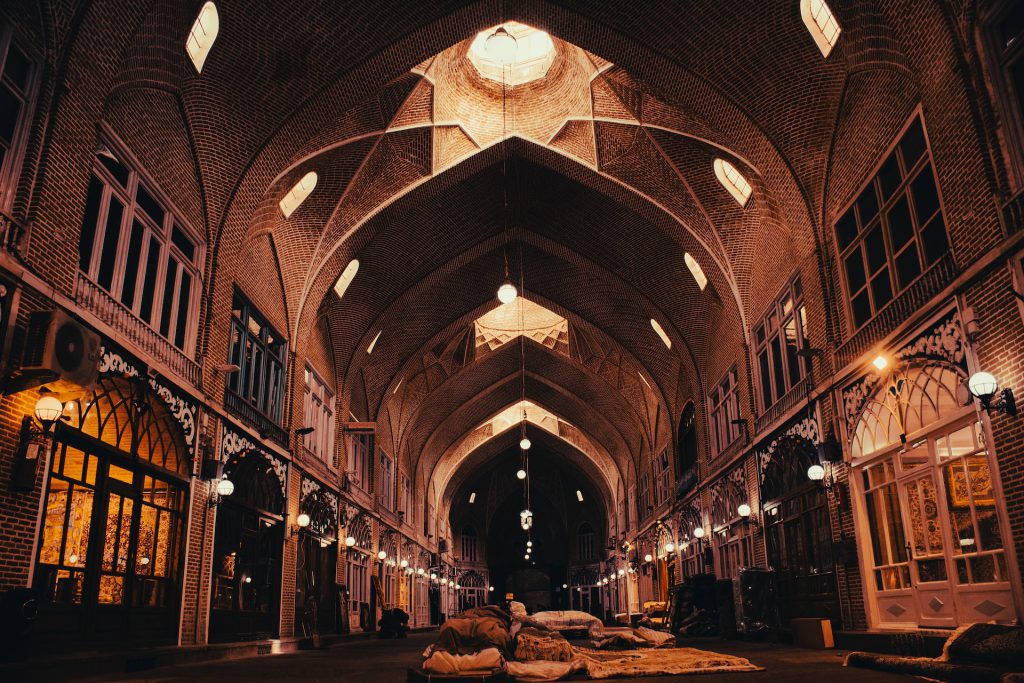
Trade and Exchange
A Living History
Commerce and Craftsmanship
A Cultural Crossroads and Socio-Political Nexus
The Persian Garden
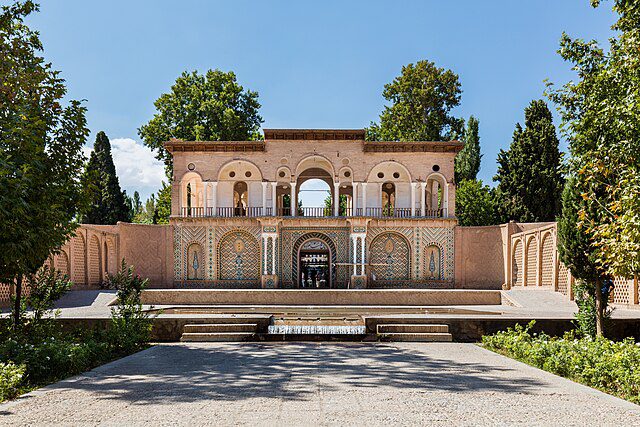
Step into the enchanting world of the Persian Garden, or Pardis, a hidden oasis veiled behind towering walls. The word “paradise” itself finds its roots in this serene haven. With the oldest example dating back to the 6th century B.C. in the garden of Cyrus the Great in Pasargadae, the Persian Garden has captivated hearts for centuries. Let us delve into the allure of these gardens, where meticulous water management systems breathe life into a desert landscape, creating a harmonious tapestry of greenery and tranquility.
Chahar Bagh and the Four Sections
At the heart of the Persian Garden lies the concept of Chahar Bagh, meaning “four gardens” in Persian. The garden is meticulously divided into four sections, each exuding its unique charm. As you stroll through these sections, you are embraced by a sense of serenity and balance. The intricate network of water channels, or qanats, gracefully meanders between these sections, bestowing life-giving nourishment upon the flora and fauna that call this paradise home.
The Essence of Persian Garden
What sets the Persian Garden apart from all others is its ingenious water management system. In a region characterized by arid and desert landscapes, the Persian Garden stands as a testament to human ingenuity and the symbiotic relationship between water and life. The meticulous irrigation channels, known as qanats, skillfully distribute water throughout the garden, sustaining the lush greenery that flourishes within. The juxtaposition of vibrant flora against the backdrop of a seemingly inhospitable environment is a testament to the transformative power of water.
An Oasis of Tranquility
The Persian Garden weaves an exquisite tapestry of contrast—a harmonious blend of water and desert surroundings. The verdant foliage, blooming flowers, and meticulously manicured landscapes create a serene refuge, transporting visitors to a realm of tranquility and peace. As you wander through the garden’s pathways, the sound of trickling water serenades your senses, offering respite from the scorching sun and enveloping you in a calming embrace. The Persian Garden is a sanctuary where nature and human design intertwine, resulting in a captivating symphony of beauty.
A Gateway to Paradise
The allure of the Persian Garden extends far beyond its physical boundaries, inspiring awe and admiration across cultures and continents. Its timeless beauty has transcended borders, influencing garden designs around the globe. The concept of the enclosed paradise, with its meticulous layout, abundant water supply, and harmonious symphony of nature, has left an indelible mark on garden design, architecture, and urban planning. From the fragrant gardens of Europe to the serene courtyards of the Middle East, the legacy of the Persian Garden continues to shape the world’s perception of paradise.
Gonbad-e Qābus
Discover the awe-inspiring beauty of Gonbad-e Qābus, an architectural masterpiece that stands as a testament to the ingenuity and artistry of early Islamic brick architecture. This magnificent tower, adorned with intricate geometric patterns, showcases both structural and aesthetic brilliance. Rising above the skyline, its ten-pointed star shape culminates in an elegant conical roof, leaving spectators captivated by its grandeur. Built in 1007 A.D. for Sultan Qābus of the Ziyari dynasty, Gonbad-e Qābus remains one of the tallest brick towers in the world, inspiring architectural marvels across Western Asia and Anatolia.
The Splendid Design
Gonbad-e Qābus is a testament to the mastery of geometric design. Its unique ten-pointed star shape, carefully crafted with precision and symmetry, evokes a sense of harmony and balance. Each facet of the tower reflects the profound understanding of mathematical principles and the fusion of structural integrity with artistic expression. The mesmerizing interplay of light and shadow on its meticulously arranged brickwork adds a sense of depth and dimension, accentuating its architectural splendor.
A Towering Achievement
As one of the tallest brick towers in the world, Gonbad-e Qābus soars above its surroundings, commanding attention and admiration. Its towering presence leaves visitors in awe, highlighting the engineering prowess and construction techniques employed during the early Islamic era. The tower’s stature stands as a testament to the ambition, wealth, and power of Sultan Qābus and the Ziyari dynasty, leaving an indelible mark on the architectural landscape of the region.
Influencing Architectural Marvels
Gonbad-e Qābus serves as a source of inspiration for subsequent mausoleum towers across Western Asia and Anatolia. Its unique design, harmonious proportions, and sophisticated craftsmanship have influenced architectural styles and techniques for centuries. Architects and builders drew upon the tower’s elegance and structural innovation, incorporating similar elements into their creations. The legacy of Gonbad-e Qābus reverberates through time, shaping the evolution of architectural aesthetics in the region.
Jame Mosque of Isfahan (Masjed-e Jāmé of Isfahan)
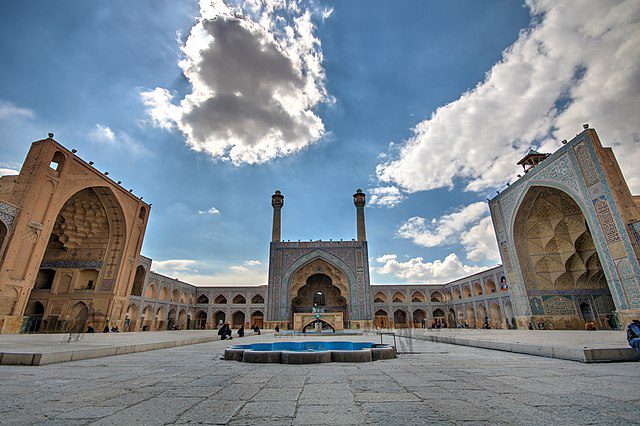
Step into the Jame Mosque of Isfahan, and you will find yourself immersed in a living museum of Islamic decorative arts. Since its inception in the early days of Islam, this magnificent mosque has served as a model for future mosques across Central Asia. The intricate craftsmanship and breathtaking beauty that adorn its walls, domes, and courtyards are a testament to the rich artistic heritage of Islamic architecture. As time unfolds, each monarch has left their mark on the mosque, adding new elements to its ever-evolving splendor.
Islamic Decorative Arts
The Jame Mosque of Isfahan stands as a testament to the immense talent and skill of Islamic artisans throughout the ages. Its exquisite decorative arts showcase a symphony of patterns, calligraphy, and geometric designs that capture the essence of Islamic aesthetics. From the intricately carved stucco work to the vibrant tile mosaics, every inch of the mosque’s interior and exterior is a masterpiece in its own right. The interplay of light and shadow on the surfaces brings the art to life, creating a mesmerizing experience for visitors.
Influencing Mosque Architecture
As one of the earliest examples of its kind, the Jame Mosque of Isfahan has played a pivotal role in shaping mosque architecture across Central Asia. Its design, characterized by four courtyards, has become a model for future mosques in the region. Architects and builders have drawn inspiration from its layout and aesthetic elements, incorporating similar features into their creations. The mosque’s enduring influence is a testament to its timeless beauty and the enduring legacy it has left on Islamic architectural traditions.
Evolution through the Ages
The Jame Mosque of Isfahan is not merely a static structure frozen in time. Instead, it is a living testament to the continuous evolution of Islamic art and architecture. With each passing era, monarchs and rulers have made their mark on the mosque, adding new elements and embellishments. This ongoing process of renovation and expansion has contributed to the mosque’s unique character and multifaceted beauty. Today, visitors can witness the layers of history and artistic expression that have shaped the Jame Mosque into the grand edifice it is today.
Golestan Palace
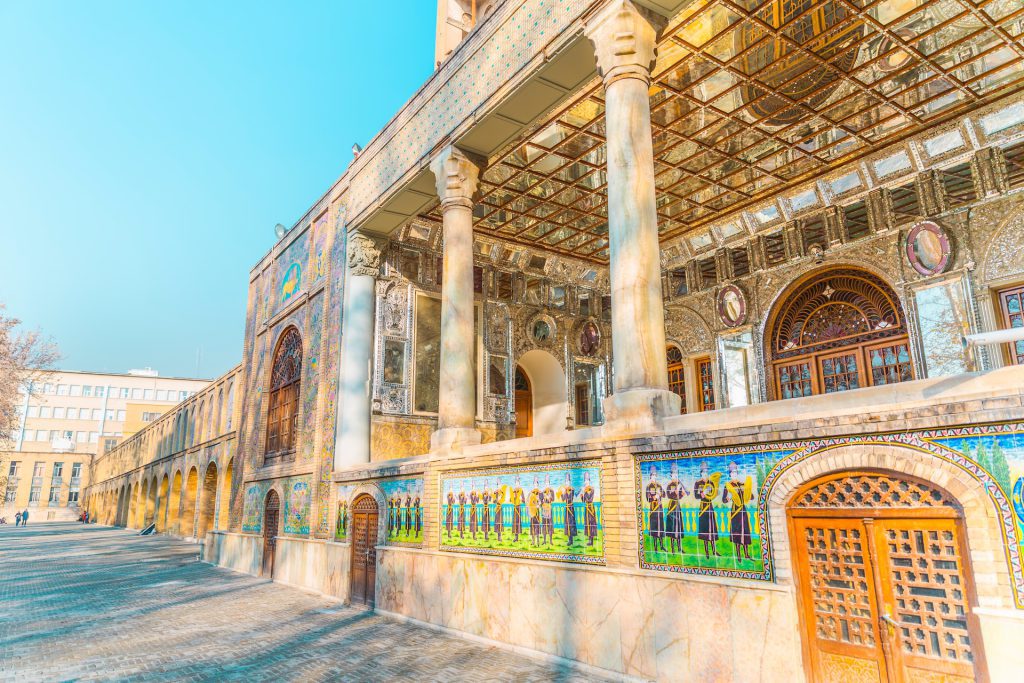
Experience the splendor of Qajar arts and architecture at Golestan Palace, an architectural gem nestled in the heart of Tehran, Iran’s vibrant capital. Originally established by the Safavids, it flourished during the Qajar era, serving as the royal residence and embodying the pinnacle of artistic achievement. Golestan Palace, adorned with captivating glazed bricks and mesmerizing tile works, transports visitors to a bygone era of opulence and grandeur. Step inside and be enchanted by the breathtaking halls adorned with brilliant mirror works, offering a glimpse into the rich history of Tehran.
A Timeless Treasure
Golestan Palace stands as a testament to the brilliance of Qajar arts and architecture. Every nook and cranny of this majestic palace exudes beauty and sophistication. From the meticulously crafted glazed bricks that adorn its walls to the intricate tile works that captivate the eye, the palace is a true masterpiece of artistic expression. The skilled artisans of the Qajar era poured their talent and creativity into every detail, resulting in an awe-inspiring fusion of colors, patterns, and designs.
Qajars’ Royal Abode
As the residence of the Qajar monarchs, Golestan Palace served as the seat of power and an emblem of the dynasty’s prestige. The palace expanded and flourished under their patronage, with each ruler leaving their mark on its opulent halls and chambers. The palace’s architecture and design reflect the tastes and aspirations of the Qajar rulers, showcasing their desire for grandeur and their commitment to creating a lasting legacy of beauty and elegance.
Glazed Bricks and Tile Works
One cannot help but be mesmerized by the stunning decorative elements that adorn Golestan Palace. Glazed bricks, meticulously arranged in intricate patterns, create a visual feast for the eyes. The vibrant hues and delicate craftsmanship of the tile works tell stories of artistic mastery and cultural heritage. These exquisite details, meticulously preserved over the centuries, offer a glimpse into the rich artistic traditions of Iran and the immense talent of the craftsmen who brought the palace to life.
Mirrors that Illuminate
Prepare to be dazzled by the brilliance of the mirror works that grace the interior of Golestan Palace. The skilled artisans of the time created intricate designs using tiny fragments of mirrors, reflecting light and creating a mesmerizing play of illumination. As you step into the palace’s halls, you will be surrounded by a breathtaking display of mirrored surfaces, enhancing the grandeur and creating a sense of wonder and enchantment.
Shahr-i Sokhta (Burnt City)
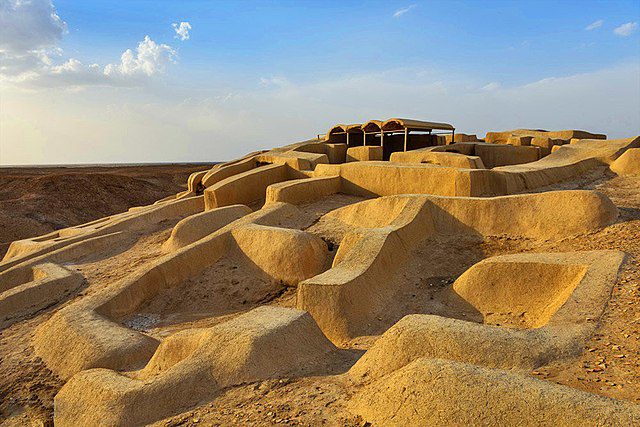
Discover the secrets of Shahre Sokhte (Shahr-i Sokhta), an extraordinary archaeological site located in Zabol, in the southeastern region of Iran. Dating back to 3200 B.C., this ancient city, also known as the “burnt city,” provides a fascinating glimpse into the transition from rural life to urban civilization. Unearthed treasures and remarkable artifacts found within its ruins paint a vivid picture of a thriving society that once existed in this historic landscape. Delve into the rich history of Shahre Sokhte, where precious gems, groundbreaking medical discoveries, and evidence of early surgical practices await.
Early Urbanization
Shahre Sokhte stands as a testament to the dawn of urban civilization, offering valuable insights into the transition from rural communities to early cities. The remains of this ancient city provide archaeologists and historians with a remarkable window into the past, shedding light on the socio-cultural and economic complexities of an early urban society. The site’s layout and infrastructure provide evidence of a structured city plan, with distinct areas for residential, commercial, and religious activities. Exploring Shahre Sokhte allows us to better understand the foundations of urbanization and the development of early civilizations.
Luxury and Artistry
The excavations at Shahre Sokhte have yielded a wealth of treasures, showcasing the affluence and sophistication of the ancient inhabitants. Among the discoveries are precious and semi-precious stones, reflecting the city’s trade connections and its residents’ appreciation for opulence. Exquisite onyx wares and intricately crafted jewelry highlight the artistry and skilled craftsmanship of the era. Notably, the finding of the first artificial eye serves as a testament to the advanced medical knowledge and ingenuity of the city’s inhabitants.
Ancient Surgical Techniques
One of the most intriguing discoveries at Shahre Sokhte is the evidence of ancient surgical practices. The excavation unearthed a remarkable skeleton bearing marks of surgical intervention, providing valuable insights into medical knowledge and practices of the time. This extraordinary find demonstrates the early mastery of surgical techniques and offers a glimpse into the advanced healthcare systems that existed within the ancient city. It stands as a testament to the ingenuity and resourcefulness of the inhabitants, who sought innovative ways to heal and improve the quality of life.
Cultural Landscape of Meymand
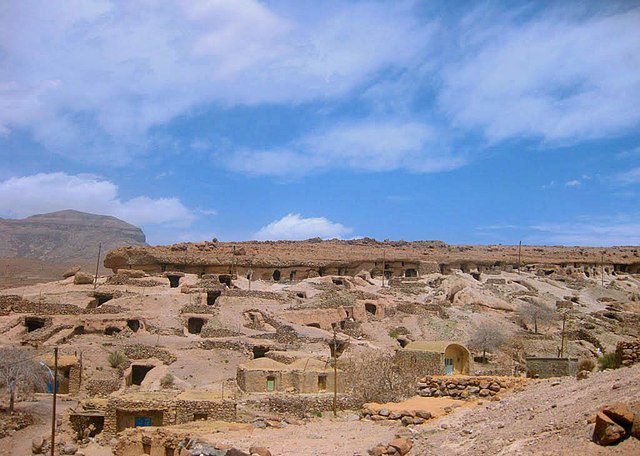
Nestled amidst rocky landscapes, this extraordinary village has been home to semi-nomadic agro-pastoralist communities for over 12,000 years. Discover the remarkable handmade houses that dot the terrain, a testament to the ingenuity and artistic prowess of our ancestors. Meymand Village stands as a living testament to human resilience and the enduring beauty of a bygone era.
Neolithic Traditions
Embarking on a journey to Meymand Village is like stepping into a time capsule, transporting you back to the Neolithic era. The village preserves the essence of a rural lifestyle that has withstood the test of time, allowing visitors to witness the customs and traditions that have been passed down through generations. Meymand offers a rare opportunity to immerse oneself in the simplicity and harmony of a bygone era, connecting with the roots of our ancient ancestors.
Handmade Houses Carved in Stone
The true marvel of Meymand lies in its extraordinary handmade houses, carved into the rocky terrain. These dwellings, crafted with minimal resources, showcase the ingenuity and artistic prowess of the villagers. The stone structures have endured for centuries, serving as a testament to human resilience and resourcefulness. The architectural brilliance of Meymand’s houses reflects the deep connection between humanity and nature, as the village harmoniously blends with its rugged surroundings.
A Living Legacy of the Distant Past
Meymand Village stands as an exceptional achievement, preserving a heritage that spans thousands of years. Despite the passage of time, the village has remained relatively intact, providing a unique opportunity to witness the ancient rural lifestyle that once thrived in the region. The enduring nature of Meymand’s structures, which are dug into the earth, offers remarkable resistance to the harsh elements, shielding the villagers from both scorching heat and biting cold. This living legacy serves as a source of inspiration, reminding us of our shared human history and the remarkable accomplishments of our ancestors.
Meymand’s Cultural Treasures
As you wander through the narrow alleys of Meymand Village, you will encounter a vibrant tapestry of cultural treasures. Engage with the local community, immerse yourself in their traditions, and gain a deeper understanding of their way of life. Discover the rich folklore, traditional handicrafts, and age-old customs that have shaped the identity of this remarkable village. Meymand offers a rare opportunity to witness a Neolithic lifestyle in its purest form, inviting us to reflect on the evolution of humanity and appreciate the resilience and adaptability of our ancestors.
Susa
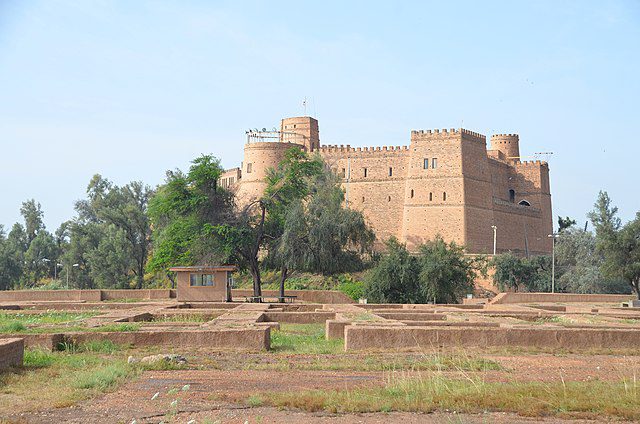
Explore the fascinating history of Susa, an extraordinary proto-urban and urban site that served as a vibrant hub of cultural exchange and trade connections from the late 5th millennium BCE to the first millennium CE. Witness the interplay of influences between the Mesopotamian and Elamite civilizations, as Susa emerged as a focal point of interaction and intersection between nomadic and sedentary cultures. Discover how this ancient city played a pivotal role in the development of technological knowledge, artistic expression, and urban planning in the region.
Crossroads of Civilizations
Susa stands as a testament to the rich tapestry of cultural interactions that shaped the ancient world. For millennia, this remarkable site served as a nexus for trade connections and cultural exchanges between diverse civilizations. The Mesopotamian and Elamite influences converged in Susa, fostering a vibrant atmosphere of intellectual and artistic exchange. This crossroads of civilizations became a melting pot of ideas, innovations, and traditions, leaving an indelible mark on the region’s history.
Nomadic and Sedentary Convergence
Susa holds a distinctive position in history as the meeting point of nomadic and sedentary cultures. It served as a bridge between these two worlds, facilitating the exchange of knowledge, goods, and ideas. The blending of nomadic and sedentary influences in Susa gave rise to a unique cultural landscape, where diverse traditions and practices coexisted and intermingled. This dynamic interplay shaped the social fabric of Susa and contributed to the development of new technologies, artistic expressions, and urban planning concepts.
An Epicenter of Technological and Artistic Advancements
The significance of Susa extends beyond its role as a cultural crossroads. The city played a pivotal role in the expansion and dissemination of technological knowledge, artistic achievements, and architectural marvels. From the majestic palaces to intricate artworks, Susa became a breeding ground for innovation and creativity. The exchange of ideas and expertise between the Mesopotamian and Elamite civilizations propelled advancements in various fields, leaving an enduring legacy of technological prowess and artistic brilliance.
Urban Planning and Architectural Marvels
Susa’s influence on urban planning and architectural concepts in the region cannot be overstated. The city’s layout and design showcased an exceptional understanding of spatial organization and town planning. The meticulous arrangement of buildings, streets, and public spaces demonstrated a sophisticated approach to urban development. The architectural marvels of Susa, characterized by grand palaces and monumental structures, continue to inspire awe and admiration, serving as a testament to the city’s visionary urban planning principles.
The Persian Qanat
Throughout history, lack of water always has been a problem for Iranians whose subsistence used to be mostly based on agriculture. So, they had to be creative and hardworking to be able to manage their water sources.
Qanat is undoubtedly the smartest invention in water management history. Qanat is a system included in a chain of water wells and a horizontal canal conducting water from its source to the settlements on lowlands.
In each Qanat, there is a mother well which is dug where the groundwater source actually is. Then, moqanies (those who dig qanat) dig a horizontal canal to where people want to use the water. Other wells are for digging and having access to the horizontal canal and also using its water.
Historic City of Yazd
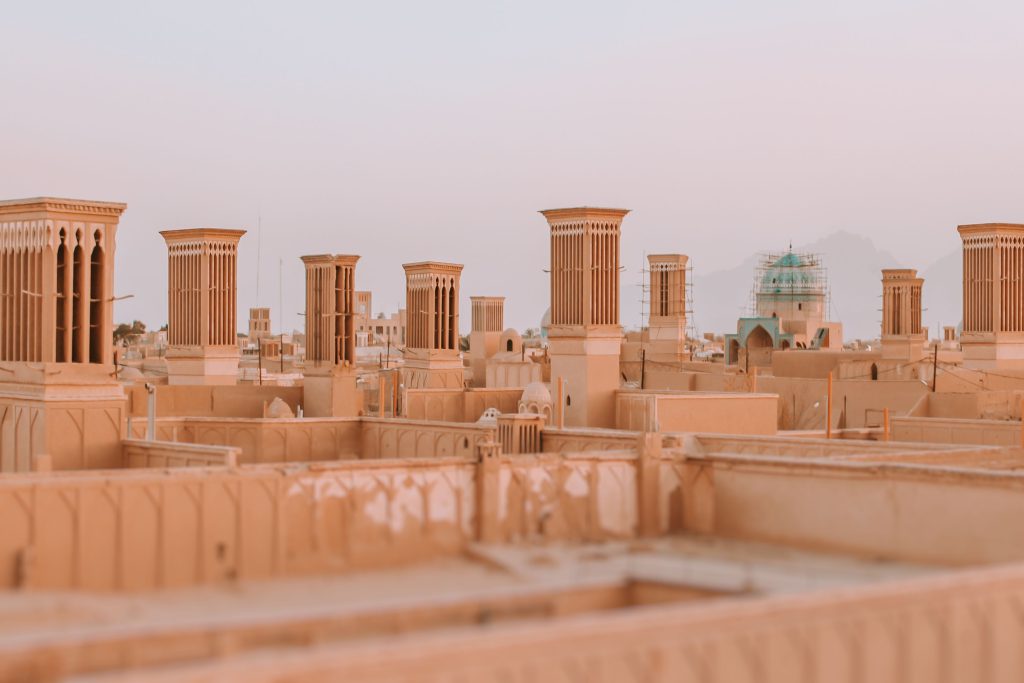
Are you fascinated by One Thousand and One Nights stories? Do you like to take a walk to the edge of history? Are you a daydreamer? So, Yazd is a “must-see” for you! Yazd is a city in the heart of the desert that owes its existence to Qanats. Buildings are earth-made and usually have a courtyard and one or two wind-catchers.
Wind-catcher is a traditional air conditioner that works by catching winds and directing them into the interior part of the building. Earth-made buildings, courtyards, wind-catchers, and qanats in the heart of the desert make an exceptional landscape, especially in the sunset when the colorful sky makes a stark contrast with the ochre city.
Sassanid Archeological Landscape of Fars Region
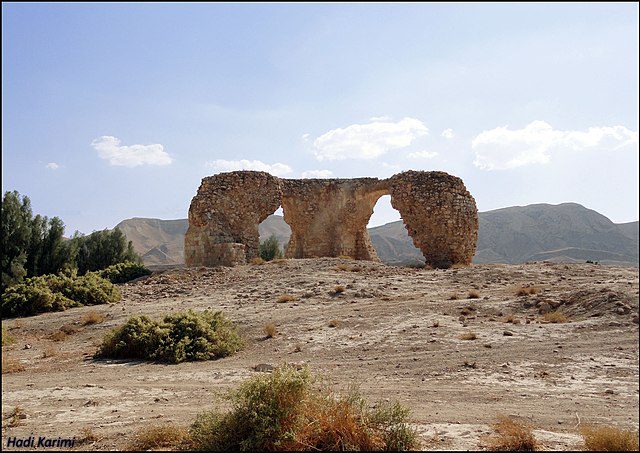
Fars was once the homeland of Achaemenids and also Ardeshir Papakan, the founder of the Sassanid dynasty. Ardeshir Papakan chose Fars as his capital. Two cities, two palaces, one castle, and some rock reliefs and sculptures left from the Sassanians (224-651 AD). Ardeshir Khureh is a round city that became a prototype for further Sassanid and early Islamic cities. Sarvestan Palace, Firuzabad Palace, and Qal’eh Dokhtar (Maiden Castle) show early techniques of dome building on a four-angled room.
The Sassanid archaeological landscape represents a highly efficient system of land use and strategic utilization of natural topography in the creation of the earliest cultural centers of the Sassanid civilization.
Cultural Landscape of Hawraman/Uramanat
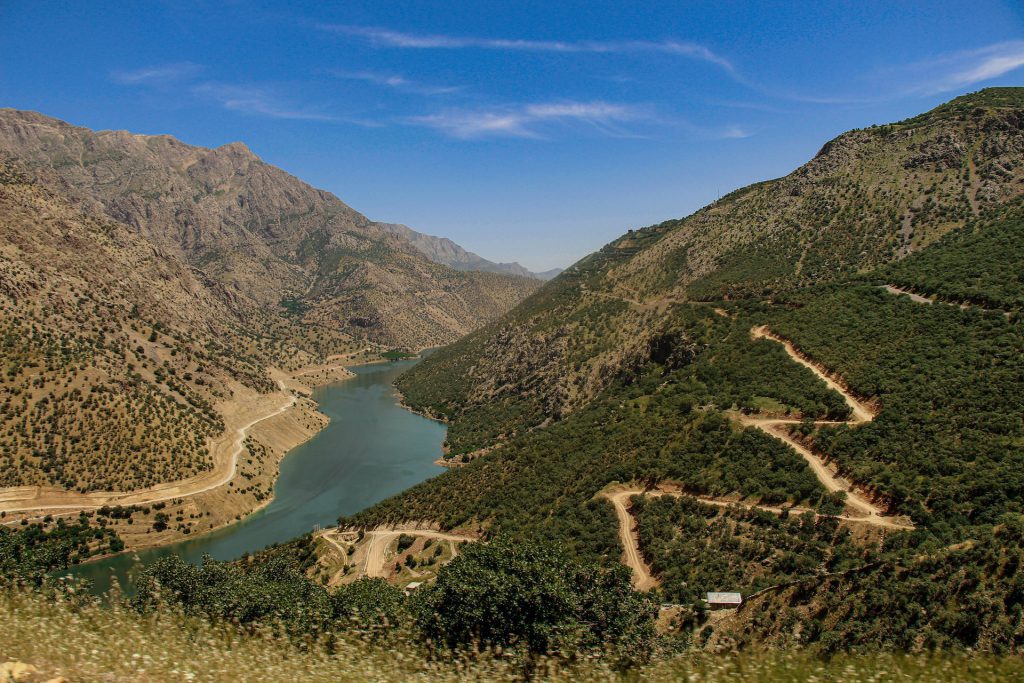
In a significant decision during UNESCO’s 44th meeting on June 25, 2021, the Cultural Landscape of Hawraman/Uramanat earned a coveted spot on the esteemed World Heritage List. This expansive historical-cultural landscape unfolds in the provinces of Kermanshah and Kurdistan in Iran, painting a vivid tapestry of cultural richness. Encompassing regions in Sarvabad, Sanandaj, and Kamyaran cities within Kurdistan, as well as Ravansar, Paveh, Javanroud, and Salas Babajani in Kermanshah, the property boasts a distinctive tiered architecture and planning.
At the heart of Hawraman lies the charm of its tiered structures, harmoniously blending into the landscape. The landscape’s embrace extends to include Zhavehrud, Uraman Takht, and Lahun Valleys, each contributing to the unique character of this UNESCO-inscribed site. The Hawraman is encapsulated by two key components: the Central-Eastern Valley in Kurdistan Province, featuring Zhaverud and Takht, and the Western Valley in Kermanshah Province, showcasing Lahun.
With this recognition, Hawraman stands as not just a geographic locale but as a living testament to the intertwining threads of history and culture that have shaped this extraordinary corner of Iran.
The Persian Caravanserai
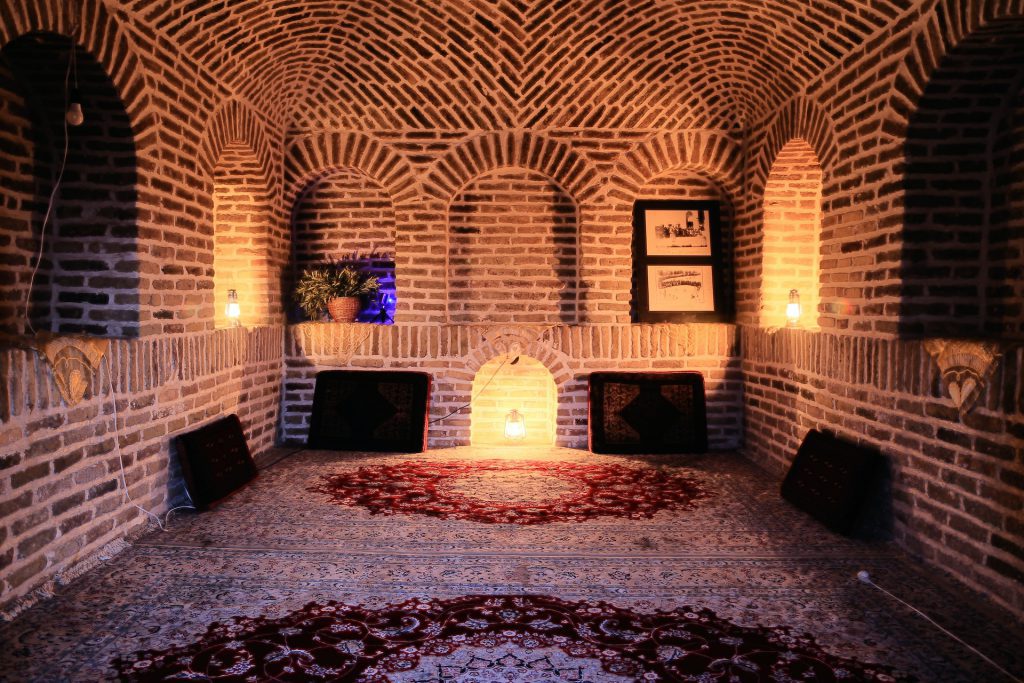
For a genuine taste of Iran’s culture, explore the country’s amazing Persian Caravanserai, recently recognized by UNESCO. These old buildings, once crucial stops on the Silk Road, aren’t just standing strong after all these years; they’re like time capsules, holding stories from way back. Now, as part of Iran UNESCO World Heritage Sites, these special spots are officially known around the world as valuable cultural treasures.
Imagine the Caravanserai Silk Road, with big walls and watchtowers made to protect travelers and their important stuff. They were smartly placed along the Silk Road, about 20-25 miles from each other. Today, these impressive buildings show off Iran’s cool history and how its people never gave up.
If you want a real experience, staying in one of these old places is the way to go. As soon as you step inside, it’s like going back in time, surrounded by the same walls and arches that have been there for hundreds of years. Whether you’re checking out the nearby desert or just chilling in your room, you’ll feel a special kind of calm and quiet that only a place with so much history can give you.
Trans-Iranian Railway
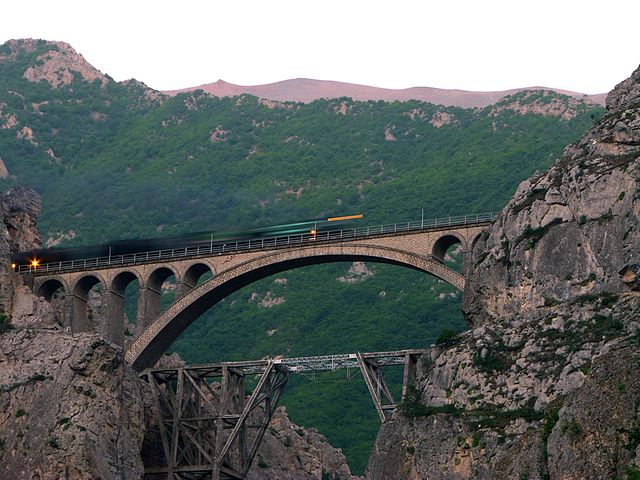
In a virtual rendezvous during the 44th session chaired from Fuzhou, China, on July 25th, the world heritage committee made a decisive move, inscribing the Trans-Iranian Railway on UNESCO’s prestigious world heritage list. A testament to the engineering prowess of its time, this railway project embarked on its journey during the Pahlavi dynasty in 1927, with its tracks finally laying firm in 1938 under the directive of the Iranian monarch, Reza Shah.
Funded entirely by the National Development Fund, the Trans-Iranian Railway stitched together the nation, connecting the bustling capital, Tehran, to both the southern shores at Bandar Imam Khomeini on the Persian Gulf and the northern landscapes at Bandar Torkaman along the Caspian Sea. The story didn’t end there – in 1961, under the reign of Reza Shah’s son, Mohammad Reza Pahlavi, the railway’s reach expanded further, stretching through Bandar Shah (also known as Bandar Torkaman) to its new terminus in Gorgan.
In a transformative stride during the “White Revolution” of 1963, led by Mohammad Reza Pahlavi, the Trans-Iranian Railway was extended, fostering connections from Tehran to the cultural hubs of Mashhad, Tabriz, and Isfahan. Today, as it gains recognition on the global stage, this railway stands not just as a transport lifeline but as a living monument, weaving together the threads of Iran’s past and present.
Lut Desert
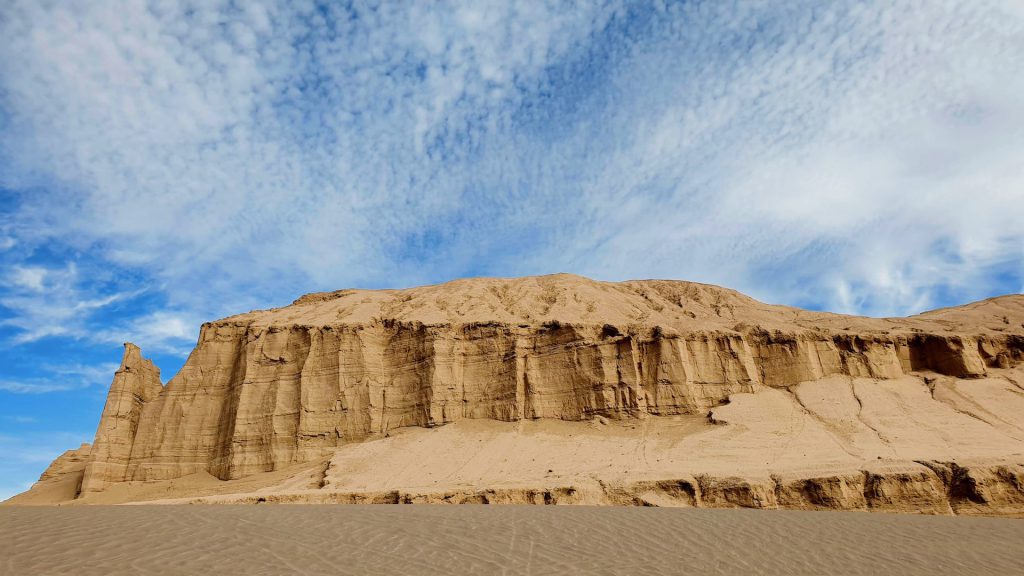
In the heart of Iran lies the vast Lut Desert, also known as Dasht-e Lut. This gigantic stretch of salt desert earned its place on UNESCO’s World Heritage List in July 2016. Ranking as the 27th largest desert globally, it’s not just big; it’s scorching. The surface of its sandy terrain can sizzle at a whopping 70 °C (159 °F), securing its position among the hottest and driest spots on Earth.
As part of Iran’s landscape, the Lut Desert fits snugly into the Afro-Asian belt of deserts, reaching from the Cape Verde islands in West Africa to the dry regions near Beijing, China. Picture rugged mountains and, adding a touch of light color, the northernmost Dasht dry lakes stretching impressively for 300 kilometers (190 mi) to the south. In this harsh environment, where high spots grab whatever rain is available, the Lut Desert unfolds as a captivating, lifeless stretch shaped by nature’s relentless forces.
Hyrcanian Forests
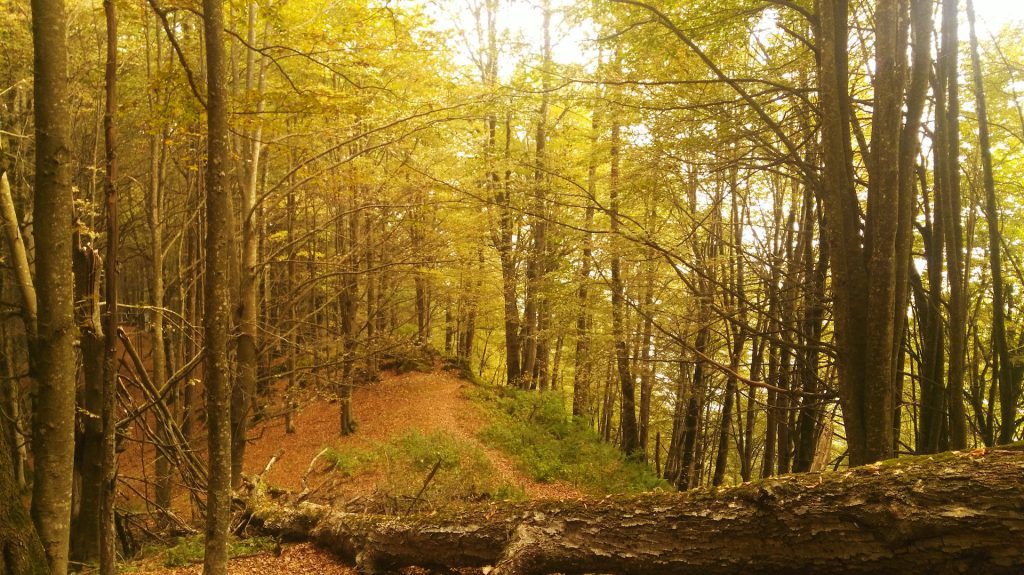
Nestled in the northern reaches of Iran, bordering the southern shores of the Caspian Sea, the Hyrcanian Forests, also known as North Forests, emerge as a lush sanctuary celebrated for their rich plant life. Renowned for their remarkable biodiversity, these woodlands have stood the test of time, tracing their roots back to the era of dinosaurs and weathering the changes of the Paleozoic Era, the third geological period. Recognized as a UNESCO World Heritage Natural Site, this expansive forest is more than just a collection of trees; it’s a living testament to the ancient past, earning the rightful titles of a ‘Natural Museum’ and an ‘Alive Fossils Museum.’
As you wander through the Hyrcanian Forests, the air thick with the whispers of leaves and the rustle of a diverse array of flora, it’s like stepping into a time machine. Each tree, a guardian of history, tells a tale that predates modern civilization. This forest, with its enduring existence, not only captivates the senses but also deserves to be revered as a preserved slice of Earth’s natural heritage, a place where the echoes of the past harmonize with the vibrant symphony of the present.
FAQs about Iran’s UNESCO World Heritage Sites
Q1: What are Iran’s heritage sites?
A1: Iran is home to numerous heritage sites that are recognized for their cultural, historical, and architectural significance. These sites include ancient ruins, palaces, mosques, gardens, and archaeological sites spread throughout the country.
Q2: How many heritage sites does Iran have?
A2: Iran currently has 27 sites listed as UNESCO World Heritage Sites. These include renowned locations such as Persepolis, Naqsh-e Jahan Square, Pasargadae, and the historic city of Yazd.
Q3: What is Persepolis?
A3: Persepolis, also known as Takht-e Jamshid, is an ancient city located near Shiraz. It was the ceremonial capital of the Achaemenid Empire and showcases impressive architectural remains, including palaces, gateways, and reliefs.
Q4: What is Naqsh-e Jahan Square?
A4: Naqsh-e Jahan Square, located in Isfahan, is one of the largest historical squares in the world. It features stunning monuments like the Imam Mosque, Sheikh Lotfollah Mosque, Ali Qapu Palace, and the Qeysarieh Portal.
Q5: What is Pasargadae?
A5: Pasargadae is an archaeological site near Shiraz and holds great significance as the first capital of the Achaemenid Empire. The site includes the tomb of Cyrus the Great and remnants of ancient palaces and gardens.
Q6: Can I visit these heritage sites in Iran?
A6: Yes, these heritage sites are open to visitors. However, it is advisable to check the current travel regulations and conditions before planning your visit.
Q7: Are there any restrictions or guidelines for visitors?
A7: While visiting Iran’s heritage sites, it is important to respect local customs and cultural norms. Modest attire is required, particularly for women, and it is advisable to follow any specific rules or instructions provided at each site.
Q8: How can I get to Iran’s heritage sites?
A8: Iran has an extensive transportation network, including airports, railways, and highways, making it relatively accessible. Domestic flights, trains, and buses connect major cities, while taxis and local transportation options are available within cities.
Q9: Are there tour guides available at the heritage sites?
A9: Yes, most heritage sites in Iran offer the services of knowledgeable tour guides who can provide detailed information about the history, architecture, and significance of each site. Hiring a guide is a great way to enhance your experience and understanding.
Q10: Can I take photographs at the heritage sites?
A10: In general, photography is allowed at heritage sites in Iran. However, it is recommended to inquire about any specific restrictions or limitations regarding photography at each site, as certain areas or objects might have their regulations.
Q11: Are there entrance fees for visiting these sites?
A11: Yes, there are usually entrance fees for visiting heritage sites in Iran. The fees may vary depending on the site and your nationality. It is advisable to check the official website or contact the site management for up-to-date information on ticket prices.
12. How many UNESCO World Heritage sites are in Iran?
12. As of 2023, there are twenty-seven locations listed in Iran UNESCO World Heritage Sites.
Last Words: The Best of Iran’s UNESCO World Heritage Sites
Iran, with its millennia-old history and diverse cultural tapestry, boasts an impressive collection of UNESCO World Heritage sites that will transport you back in time. From the awe-inspiring ruins of Persepolis to the majestic city of Isfahan, known for its breathtaking Islamic architecture, Iran offers an unparalleled opportunity to witness the remnants of ancient civilizations.
Embarking on an archeological tour in Iran offers numerous advantages for travelers seeking to explore the country’s rich heritage. At ToIranTour, we understand the allure of archeological exploration and the desire to unlock the secrets of Iran’s UNESCO heritage sites. With our extensive expertise in Iran tours and travel packages, we have curated a range of archeological tours that cater to the discerning traveler’s preferences.
Contact ToIranTour today to start planning your dream archeological tour and witness the timeless beauty of Iran’s UNESCO treasures firsthand.

